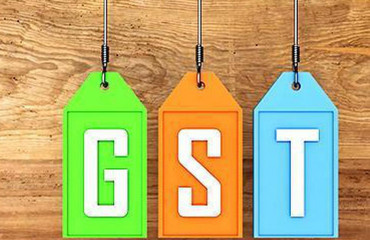
Inverted duties refer to situations where raw materials are taxed more than the final product, skewing prices, straining working capital, and pulling businesses into protracted refund battles.
Inverted duties refer to situations where raw materials are taxed more than the final product, skewing prices, straining working capital, and pulling businesses into protracted refund battles.
NEW DELHI : After slashing goods and services tax (GST) rates in September, the Centre and states are now gearing up to fix the tax system's next fault line—inverted duty structures, according to two persons aware of discussions in the government.
Inverted duties refer to situations where raw materials are taxed more than the final product, skewing prices, straining working capital, and pulling businesses into protracted refund battles.
Some inverted tax structures were fixed at the earlier 3 September GST Council meeting—when the tax rate on several goods including fertilizers, textiles and bicycles was lowered.
Now, the GST Council has set its eyes upon correcting the anomaly in other industries as well, including select railway parts, metal ores and concentrates, and products like water pumps, the two people cited earlier said on condition of anonymity. The Council is taking another look at textiles, too, where the duty inversion has been partially addressed.
A ministerial group led by Bihar deputy chief minister Samrat Chaudhary has already done considerable work on correcting the anomaly, the first person cited above said.
Another ministerial group led by Goa chief minister Pramod Sawant is tasked with a review of the GST structure of the real estate sector. This committee is looking into issues like taxation of certain transactions like transfer of development rights. Its recommendations will also figure in future GST Council discussions, the second person cited earlier said.
These deliberations may, however, take time before concrete measures are identified, the first person added.
The government is yet to decide on the date for the next GST Council meeting but it is expected to be held before February, close to or after the Union Budget FY27 consultations to be held between Union finance minister Nirmala Sitharaman and state finance ministers sometime in December.
At the next GST Council meeting, ministers are expected to review the revenue implications of the steep tax rate cuts implemented from 22 September. Fresh recommendations on addressing inverted duties may also figure at the meeting.
When raw materials are taxed higher than finished products, businesses seek refunds on the excess tax paid on raw materials. This has been an area of disputes.
The government had in 2021 estimated the annual refund claims on account of inverted duty structure at about ₹30,000 crore. Experts said manufactured items attracting 5% tax—where raw materials are taxed at a higher rate—are prone to refund claims.
From 1 November, the GST Council implemented a system to provisionally refund 90% of such tax refund claims on the basis of data analysis and risk evaluation.
Experts said that the Council's decisions in September marked a meaningful step toward addressing long-standing rate anomalies, and the Council continues to examine inverted duty structures wherever they cause working-capital strain or complicate credit flows.
"Service segments with high value addition or wider public relevance such as goods transport, concessional-rate job-work services and passenger transport, should also be considered for review by the fitment process," said Amit Maheshwari, tax partner at AKM Global, a tax and consulting firm.
While welcoming the recent reduction in GST rates and removal of cess on several items, Maheshwari pointed out that many businesses had already procured inputs at earlier, higher tax rates, leading to accumulated credits. "Providing transitional relief would help smooth this adjustment," he said.
"On the inverted duty structure, while the government has accepted a refund mechanism for accumulated un-utilised input tax credits and has put in place a mechanism for it, it is currently limited to input goods," said R. Muralidharan, a practising lawyer and indirect tax expert. "This refund facility may need to be extended for the taxes paid on input services and capital goods also as the logic for such refunds remain the same across inputs, input services and capital goods."
Abhishek Jain, indirect tax head and partner at KPMG India, said that after the GST rate cuts in September, a large chunk of goods that moved from 12% to 5% have been witnessing input tax credit accumulation on account of higher rate on input services majorly.
"While they would be able to claim a refund of input tax credit accumulation on inputs, higher credit linked to input services and capital goods pose a significant working capital concern/ cost for these businesses," said Jain.
Correcting duty inversion has been a priority for the GST Council, although it has posed several practical challenges due to the complexities in the value chain of goods and services.
The Council had in September reduced the GST rate on man-made fibre from 18% to 5% and on manmade yarn from 12% to 5%. It also lowered the GST from 18% to 5% on sulphuric acid, nitric acid and ammonia to correct the duty inversion on fertilizers taxed at 5%.
